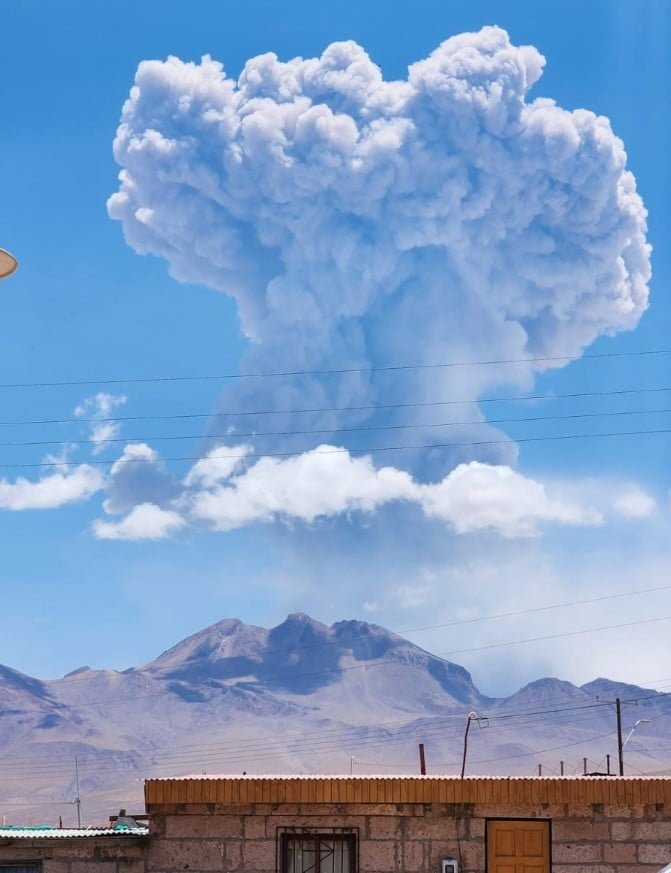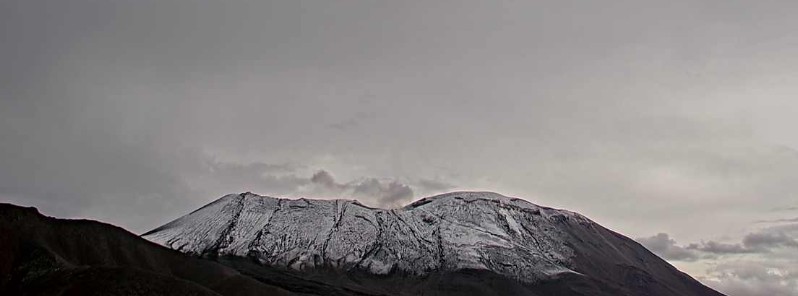Seismic activity around Chile’s Lascar volcano has increased over the past 2 days, causing Sernageomin to raise its Alert Level to Orange. The security perimeter around the crater was expanded to 10 km (6.2 miles), with the community urged to avoid unnecessary exposure to potential dangers. The seismicity is primarily linked to fluid dynamics within the volcanic system, which could be a result of the destabilization of a remnant magmatic body. This activity could lead to explosive events, potentially causing ashfall in the area.
- The largest historical eruption at this volcano took place in 1993, producing pyroclastic flows to 8.5 km (5.3 miles) NW of the summit and ashfall in Buenos Aires.
Monitoring stations installed near the Lascar volcano in Chile detected increased seismicity under the volcano on January 27, 2023. The increased activity, associated with fluid dynamics within the volcano, prompted the Chilean National Service of Geology and Mining (Sernageomin) to raise the Alert Level to Orange.1
As a result, the Yellow Alert for the commune of San Pedro de Atacama was extended, with the security perimeter around the crater being expanded from 5 km (3.1 miles) to 10 km (6.2 miles) and access to the area being restricted. Sernageomin is urging the public to respect this exclusion zone and avoid exposing themselves to dangerous situations.
An increase in rock fracture (VT) earthquakes has been recorded, including one with the highest energy located 0.8 km (0.5 miles) SSE of the active crater with a depth of 3.5 km (2.2 miles). A moderate flow of SO2, 321 tons per day, was registered on January 25, with an SO2 anomaly of 268 t/d detected on January 27 based on satellite data.2
Moderate degassing and incandescence were observed when meteorological conditions allowed, with incandescence being intermittently observed in the crater at moderate to low intensity.
OAVV said the energy and sources associated with the seismicity could indicate a destabilization of a remnant magmatic body at the surface level, although a more explosive event without clear precursors is not ruled out. In the event of an eruption, minor eruptive pulses are expected, with the potential impact area estimated to be within a 10 km (6.2 miles) radius from the active crater. The potential for ashfall depends on the amount of material emitted and wind direction in the area.
A strong vulcanian explosion took place at Lascar volcano, Chile at 15:36 UTC on December 10, 2022.3
The explosion generated short-range pyroclastic flows toward the north and southeast flanks of the volcano.

Geologic summary
Láscar is the most active volcano of the northern Chilean Andes. The andesitic-to-dacitic stratovolcano contains six overlapping summit craters. Prominent lava flows descend its NW flanks.
An older, higher stratovolcano 5 km (3.1 miles) E, Volcán Aguas Calientes, displays a well-developed summit crater and a probable Holocene lava flow near its summit (de Silva and Francis, 1991).
Láscar consists of two major edifices; activity began at the eastern volcano and then shifted to the western cone.
The largest eruption took place about 26 500 years ago, and following the eruption of the Tumbres scoria flow about 9 000 years ago, activity shifted back to the eastern edifice, where three overlapping craters were formed.
Frequent small-to-moderate explosive eruptions have been recorded since the mid-19th century, along with periodic larger eruptions that produced ashfall hundreds of kilometers away.
The largest historical eruption took place in 1993, producing pyroclastic flows to 8.5 km (5.3 miles) NW of the summit and ashfall in Buenos Aires.4
1 Volcán Láscar pasará a alerta técnica naranja – Sernageomin – January 28, 2023
2 Lascar volcanic activity report – OAVV – January 28, 2023
3 Strong explosion, pyroclastic flows at Lascar volcano, Chile – The Watchers – December 11, 2023
4 Lascar – Geological summary – GVP




